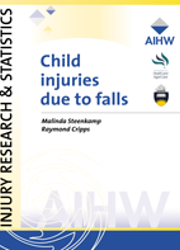Summary
Introduction
Falls are a major cause of injury morbidity in children aged 0-14 years. This Report analysed fall-related deaths data among children for 1979-1998 and similar hospital separations data for 1993/94-1997/98. It also examined emergency department data for the period 1 July 1996-30 June 1998, as obtained from the Monash University Accident Research Centre.
Epidemiology of fall-related injury among children
- Cases due to falls among children are numerous, but they are rarely life-threatening. However, a notable number of children have more serious outcomes following falls.
- There is an association between the circumstances leading to injury and age, as well as sex (to a lesser degree). This reflects behavioural and developmental changes that occur as children grow older.
- The height involved in a fall plays an important role in regard to injury outcome.
Issues relevant to data sources on fall-related injury among children
- There are several general issues that are relevant when interpreting different data sources used in this Report.
- The three data sources used in this Report each has distinct strengths and weaknesses for surveillance of fall-related injury among children.
- The transition to ICD-10(-AM) may result in a break in the time series for both deaths and hospitalisations, but ICD-10-AM may expand coding categories for hospital separations data.
- Inclusion of 'extra' fall-related cases have some impact on deaths, but very little on hospital separations.
Conclusions
- It is necessary to target fall-related injury research and interventions.
- The impact of fall-related injury with more severe outcomes needs to be assessed.
- Data available for monitoring the incidence of fall-related injury can be improved in specific ways.
More detailed discussions of these points can be found in Sections 5 and 6.



